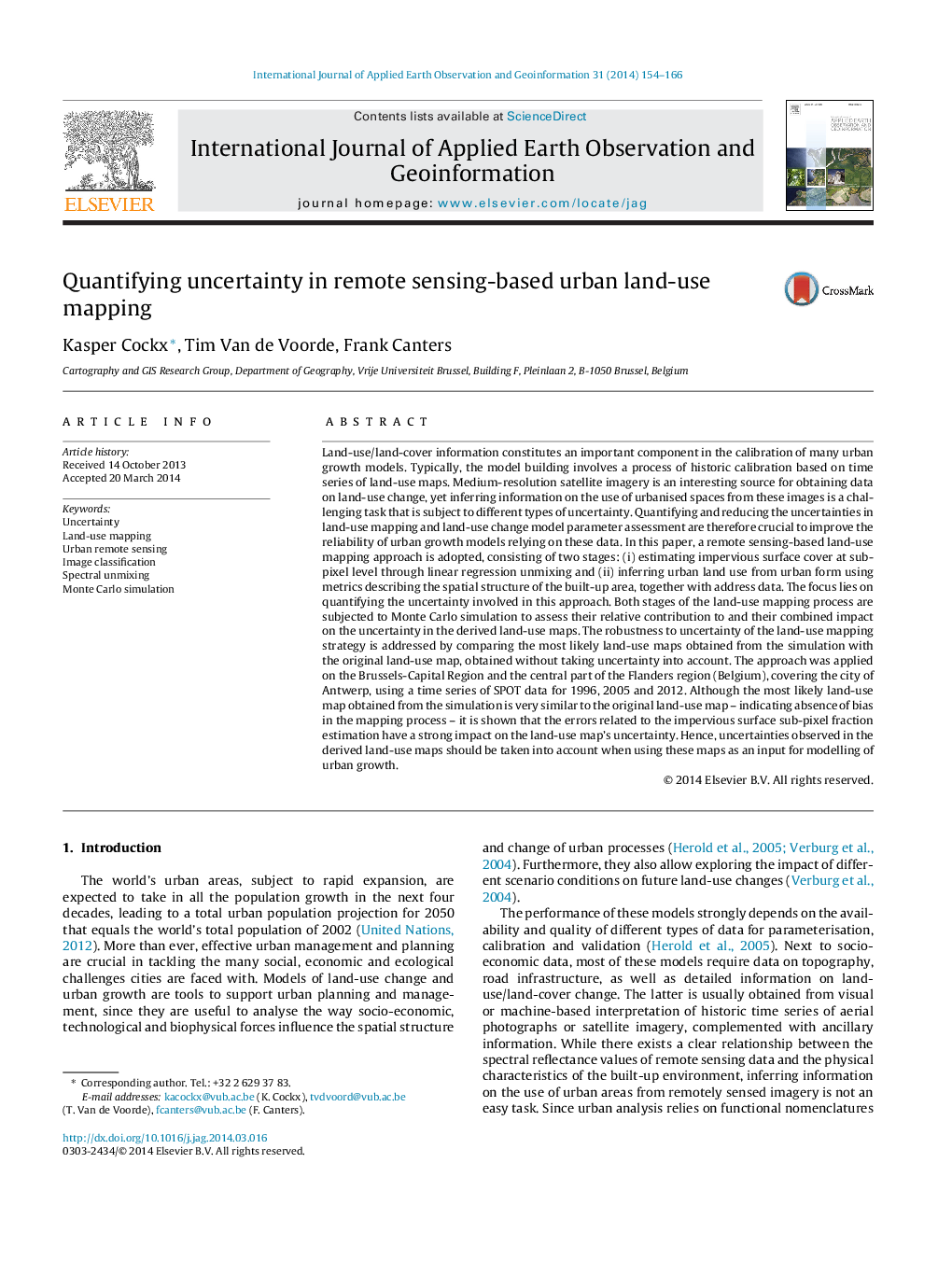| Article ID | Journal | Published Year | Pages | File Type |
|---|---|---|---|---|
| 6348913 | International Journal of Applied Earth Observation and Geoinformation | 2014 | 13 Pages |
Abstract
Land-use/land-cover information constitutes an important component in the calibration of many urban growth models. Typically, the model building involves a process of historic calibration based on time series of land-use maps. Medium-resolution satellite imagery is an interesting source for obtaining data on land-use change, yet inferring information on the use of urbanised spaces from these images is a challenging task that is subject to different types of uncertainty. Quantifying and reducing the uncertainties in land-use mapping and land-use change model parameter assessment are therefore crucial to improve the reliability of urban growth models relying on these data. In this paper, a remote sensing-based land-use mapping approach is adopted, consisting of two stages: (i) estimating impervious surface cover at sub-pixel level through linear regression unmixing and (ii) inferring urban land use from urban form using metrics describing the spatial structure of the built-up area, together with address data. The focus lies on quantifying the uncertainty involved in this approach. Both stages of the land-use mapping process are subjected to Monte Carlo simulation to assess their relative contribution to and their combined impact on the uncertainty in the derived land-use maps. The robustness to uncertainty of the land-use mapping strategy is addressed by comparing the most likely land-use maps obtained from the simulation with the original land-use map, obtained without taking uncertainty into account. The approach was applied on the Brussels-Capital Region and the central part of the Flanders region (Belgium), covering the city of Antwerp, using a time series of SPOT data for 1996, 2005 and 2012. Although the most likely land-use map obtained from the simulation is very similar to the original land-use map - indicating absence of bias in the mapping process - it is shown that the errors related to the impervious surface sub-pixel fraction estimation have a strong impact on the land-use map's uncertainty. Hence, uncertainties observed in the derived land-use maps should be taken into account when using these maps as an input for modelling of urban growth.
Keywords
Related Topics
Physical Sciences and Engineering
Earth and Planetary Sciences
Computers in Earth Sciences
Authors
Kasper Cockx, Tim Van de Voorde, Frank Canters,
